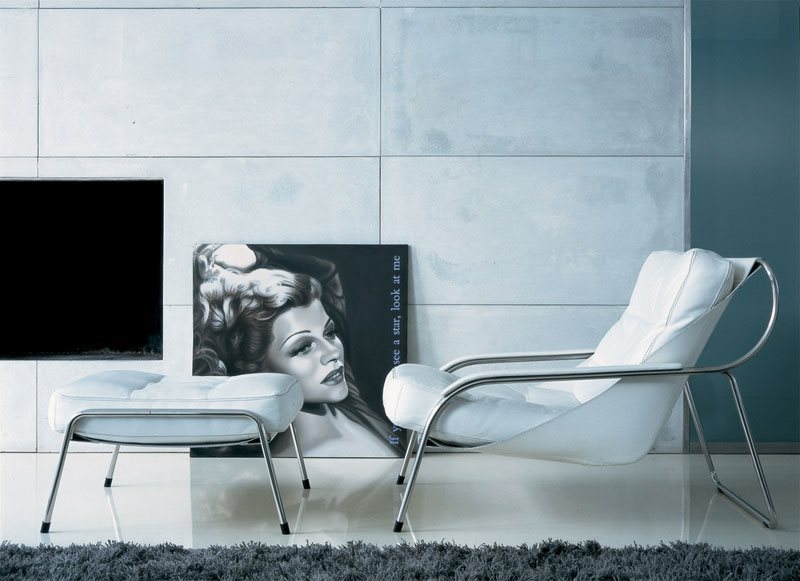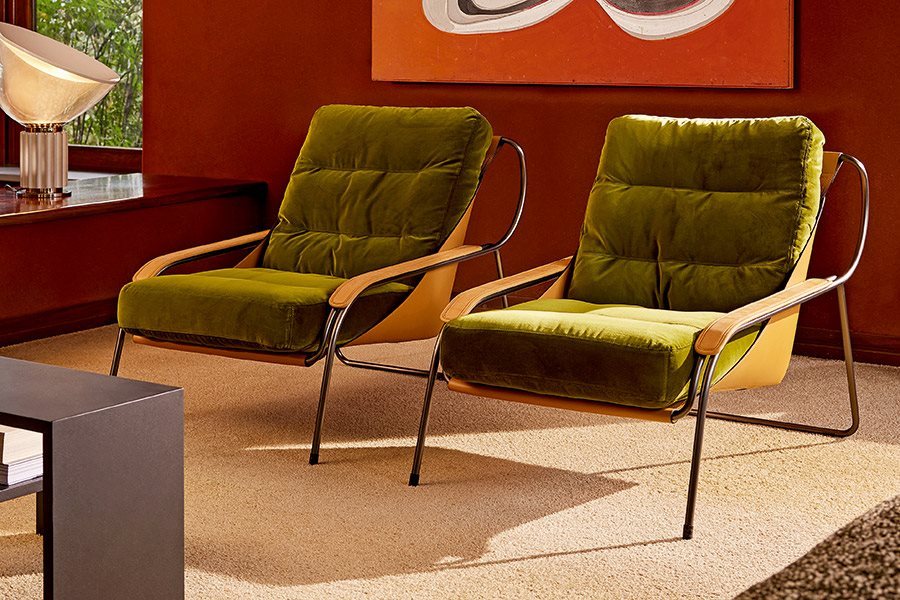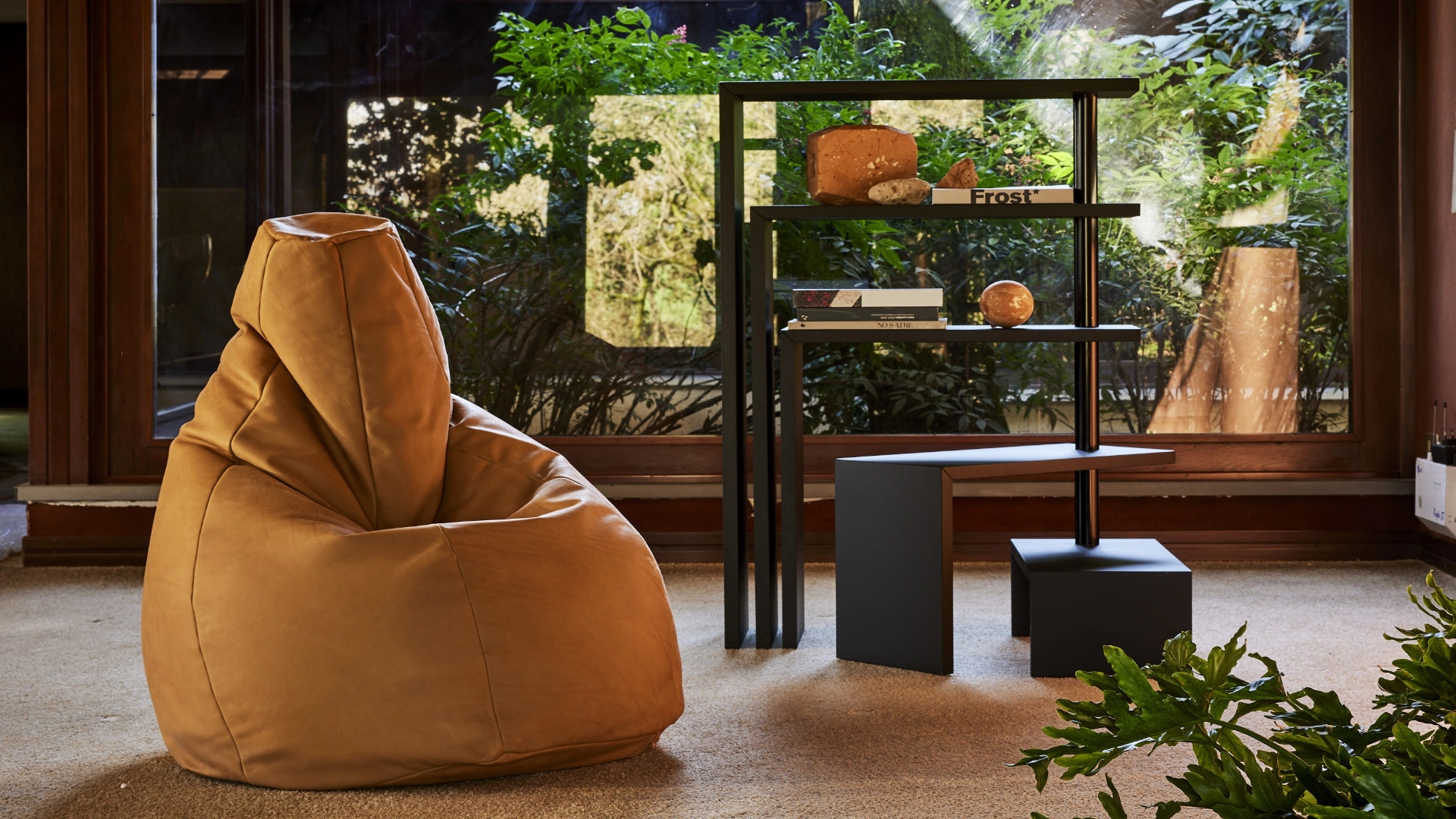The lounge chair designed by Marco Zanuso
Among the reissues in the Zanotta catalogue, Maggiolina is a case of excellence. It embodies a typology and a way of constructing furniture which opened up an epoch. In 1972 Zanotta puts into production the lounge chair designed in 1947 by Marco Zanuso, the great Milanese designer who is among the first to inaugurate the phenomenon of ‘good Italian design’. Tireless experimenter of material and technology applied to design, Zanuso averts, at the end of the 40’s, that the functionalistic theories where a product is subordinate to its function have to give way to new concepts of design based on a balance between form and function. In the Maggiolina project, Zanuso abandons the traditional notion of the armchair as a padded structure that makes use of artisan skills, to experiment with a new constructive system conceived for serial industrial production. The designer’s research is based on the advancement of the modern method, with a functional breaking down of elements: curved and painted metal tubing, semirigid body and two padded cushions. Maggiolina is immediately conferred two international accolades: in 1948 the Golden medal from the VIII Triennale in Milan, and in 1949 it is exhibited at the Moma museum in New York. When Zanotta launches the reissue of Maggiolina the original version is chosen, reviewed by its designer: an elegant stainless steel tubular frame, armrests and body in black or white cowhide, and leather cushions upholstered in goose down. Nowadays it is available also in different colours of leather matching with cowhide of the same shade. It is the first, high-quality lounge chair after Eames and Le Corbusier’s classics. An icon-object that the Die Neue Sammlung museum in Munich has on permanent display.


